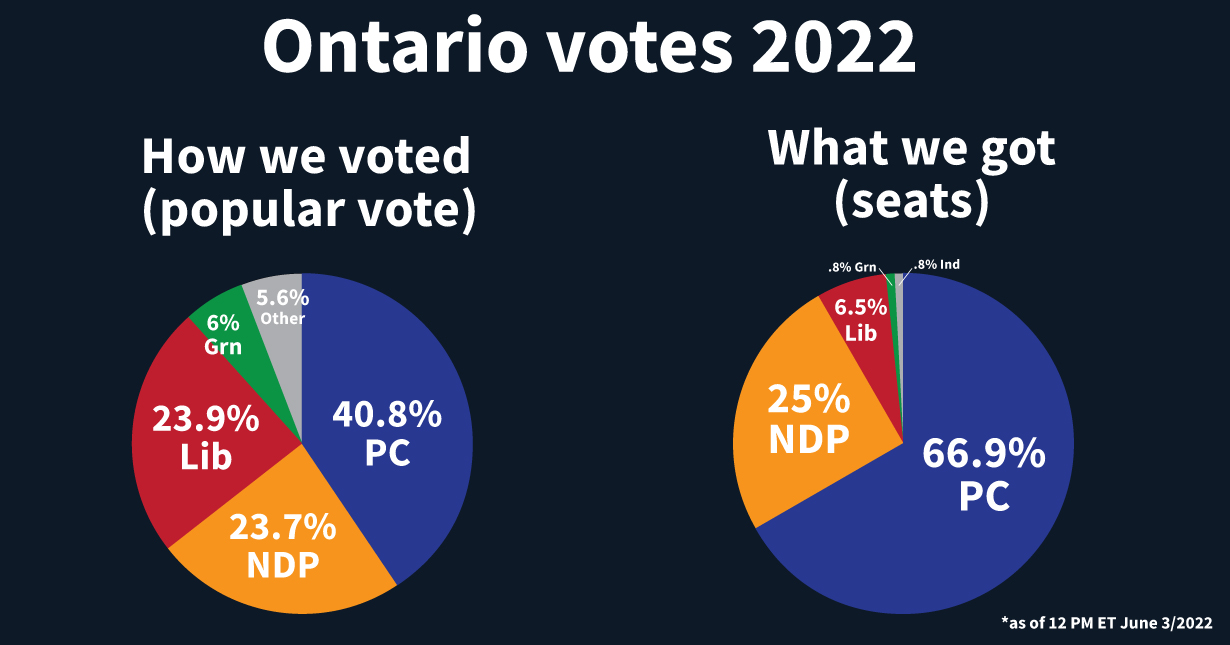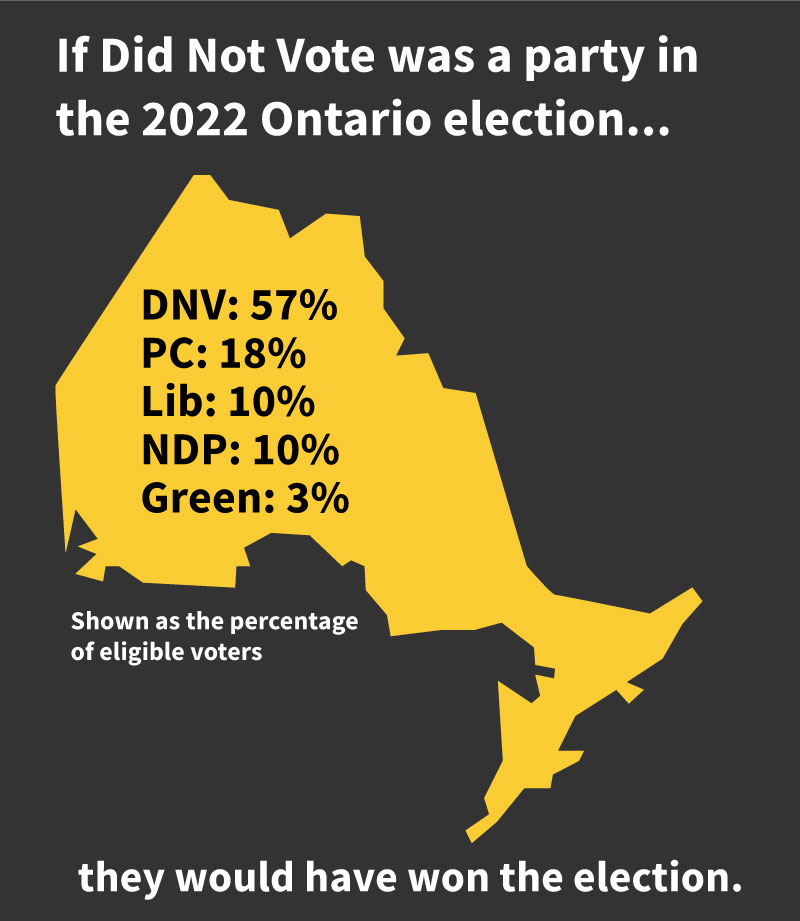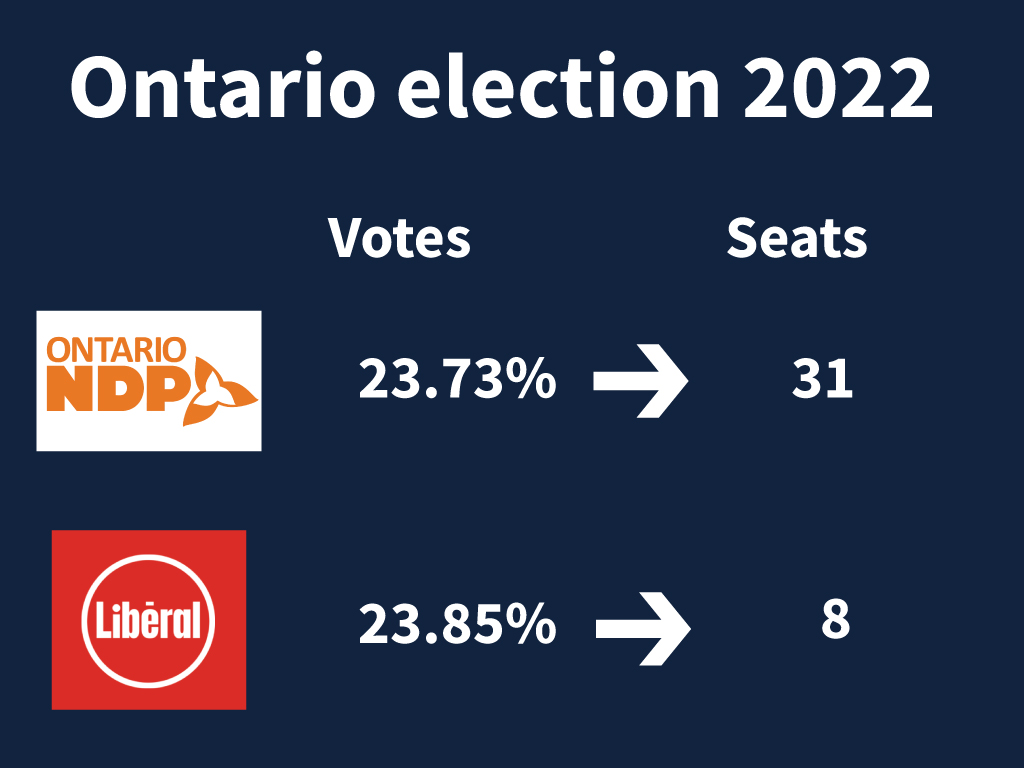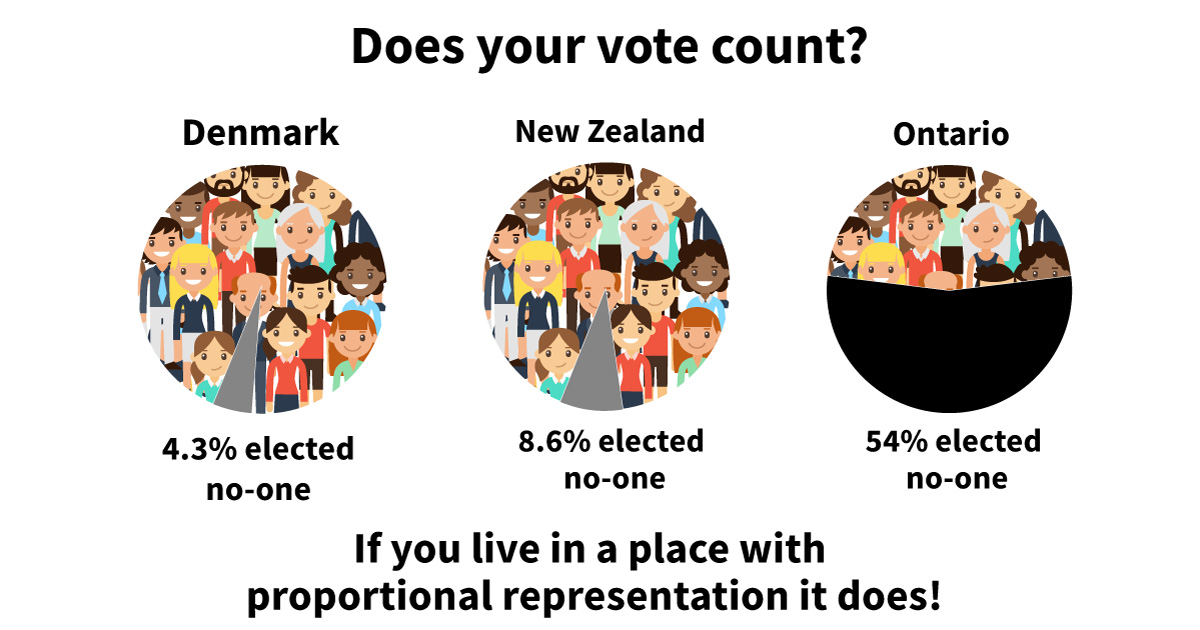
PCs form “majority” government with 40.84%* of the vote: Ontario voters cheated by first-past-the-post
Only 40.84% of Ontario voters supported the PCs, yet the voting system has handed Doug Ford’s PCs 67% of the seats and 100% of the power.
The election results were a gross misrepresentation of what voters said with their ballots:
- The PCs got a landslide majority with just 40.84% of the vote. They won a whopping 83 seats―that’s 7 more seats than 2018 with only 0.33 points more of the popular vote.
- The Liberal Party earned more of the popular vote than the NDP―23.85% vs 23.73%―but the NDP’s voters elected 31 MPPs and Liberal voters only elected 8.
- Despite the support of almost one quarter of Ontario voters, first-past-the-post means the Ontario Liberal Party will again be denied official party status in the legislature, making it even more difficult for the party to represent its voters.
- Greens increased their popular vote share from 4.6% in 2018 to 5.96% but still elected only one MPP (Mike Schreiner) to represent the 279,265 people who voted Green in Ontario.
- 54% of voters – 2,531,087 – cast wasted votes that elected no-one.
Thresholds of 3–5% are common in countries with proportional systems and any PR system for Canada wouldn’t deliver perfectly proportional results. For example, see here how smaller parties would have fared in the recent federal election.
In an Ontario PR system with a 3% threshold, the results would have been:
Progressive Conservative: 53
Ontario Liberal Party: 31
NDP: 31
Green Party of Ontario: 8
Independent: 1
Voter turnout fell to 43.54%. That means the current “majority” government is supported by 17.77% of eligible voters. In a winner-take-all electoral system, many people feel they must vote for the lesser evil, or are discouraged from voting at all.
The Ontario Liberal Party’s proposed “reform”―a winner-take-all ranked ballot―wouldn’t have solved any of the glaring problems with Ontario’s voting system. A simulation shows that a winner-take-all ranked ballot would have led to the same outcome: a PC “majority” with only a minority of the popular vote. Australia has been using winner-take-all ranked ballot for 100 years and almost always elects a false majority government.
It’s time for parties in Ontario to put evidence and voters first by moving ahead quickly to convene an independent, non-partisan Citizens’ Assembly on Electoral Reform.
*Elections Ontario numbers as of 12 PM, June 3, 2022



